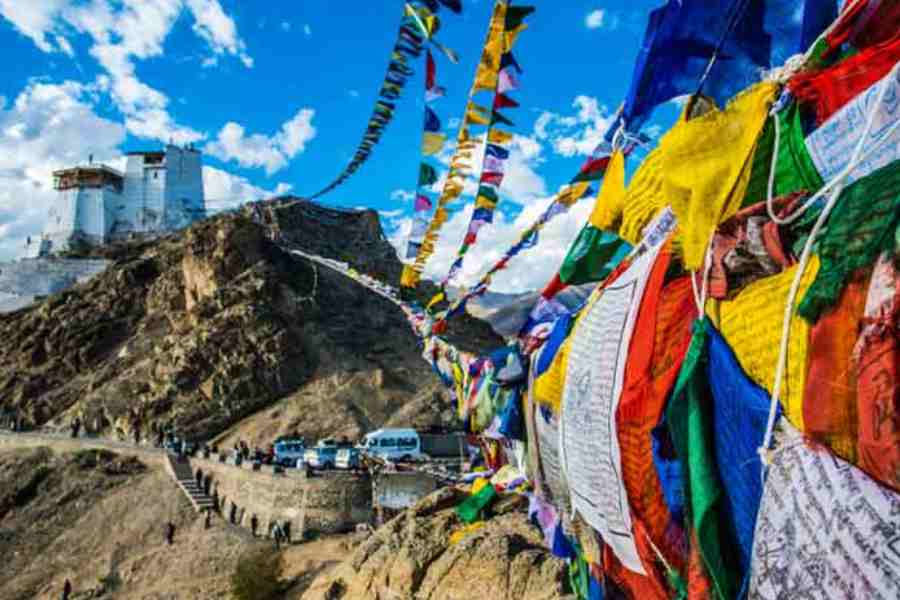Recent developments in Manipur point to a common situation in Indian politics wherein communities facing shared underdevelopment and marginalisation, rather than fighting together for empowerment, get trapped in mutually exclusive and binary identity politics. Rather than struggle together for development, Kukis and Meities see each other as the ‘enemy’ and are stuck in a zero-sum relationship. There are other examples of such painfully divisive and polarised identity politics. One may thus ask whether there is a way out of such an impasse.
This is a difficult question to answer. But onecan find some hope in Ladakhi identity politics, which is in the process of reshaping itself from being sectarian to being inclusive. Ladakh has had a historyof internally fragmented identity politics on a sectarian and subregional basis. This division was demonstrated in 2019 when the Centre’s decision to reorganise Ladakh as a Union territory was announced. There were celebrations in predominantly-Buddhist Leh, but protests in Muslim-dominated Kargil.
The Leh-based leadership, claiming to speak on behalf of Ladakh, had sought to privilege the Buddhist identity of Ladakh. Holding the Kashmiri elite responsible for Ladakh’s backwardness, it had demanded the severance of the relationship with this region from 1947 onwards. The demand for a UT was articulated in a systematic manner in the 1989 agitation during which a call for the boycott of Muslims was given by the Ladakh Buddhist Association. The boycott, which remained in force for three years, created a chasm between the Buddhists and Muslims on the one hand and Leh and Kargil on the other. The politics of the two sub-regions also followed different trajectories.
The Kargil leadership consistently opposed the demand for UT status mainly because of the apprehension that a separate entity for Ladakh might accentuate the dominance of Leh. While Leh complained about Ladakh’s discrimination and neglect within the former state of Jammu and Kashmir, Kargil cited its underdevelopment vis-à-vis Leh and complained of being discriminated against. So fragmented was the political response that the leaders of the two respective communities would not agree on anything and scoured for different sources of support. The Buddhists looked towards the Centre in its fight against the Kashmiri leadership: it was in response to Leh’s identity politics that the Centre granted scheduled tribe status for Ladakhis and, then, eventually the status of a UT. Kargil, meanwhile, looked towards Kashmir’s Muslim leadership to not only balance its relationship with Leh but also preserve the Muslim-majority character of J&K.
But after the establishment of Ladakh as a UT, a realisation has dawned upon the leadership of Leh and Kargil that the region has not been able to negotiate the best bargain in the course of J&K’s reorganisation and that the existing framework has failed to fulfil the interests and long-standing aspirations of Ladakhis. In the absence of a structure of political representation (Ladakh is a UT without a legislature) and with a centralised and bureaucratised governance, there are concerns about the rights of the local people and the protection of land, environment and ecology.
It is in this context that the Leh-based Apex Body of People’s Movement for Sixth Schedule and the Kargil-based Kargil Democratic Alliance have come together and worked on a joint agenda for the fulfilment of their common demands, including full-fledged statehood for Ladakh and constitutional safeguards under the Sixth Schedule or Article 371 of the Constitution.
This new politics is inclusive and tuned towards the empowerment of Ladakh as a whole. Seeking indigenous control over its resources as well as its politics, the leadership is sticking together. Realising that subregional — Leh vs Kargil — and communal — Buddhist vs Muslim — divisions would undermine the negotiating powers of Ladakhis, they have been working on maintaining their unity and seeking to resolve their friction.
Rekha Chowdhary is a retired professor










